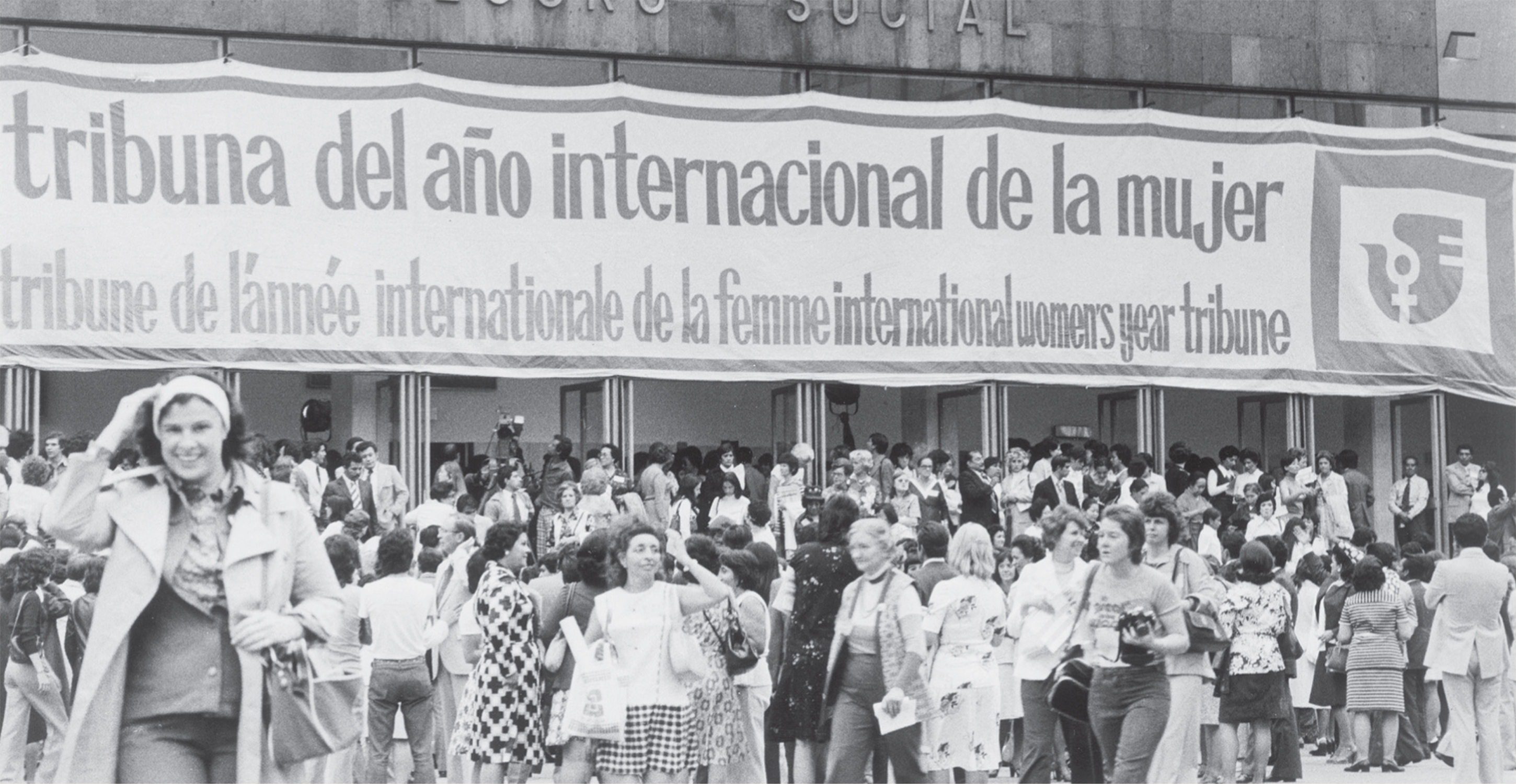The American Promise:
Printed Page 818
BEYOND AMERICA’S BORDERS
Transnational Feminisms
Organizations of women across national borders originated in the nineteenth century, but global connections among women increased dramatically in 1945 with the creation of the United Nations, whose charter affirmed “the equal rights of men and women.” In 1947, the UN established a Commission on the Status of Women, creating a forum for women from around the globe to meet and be heard; in 1948 it adopted a Universal Declaration of Human Rights, which explicitly rejected sex discrimination. These commitments to justice for women went far beyond any rights guaranteed to women in the United States or most other nations, thereby setting standards and raising expectations.
The UN helped launch a global feminist movement of unparalleled size and diversity when it declared 1975 International Women’s Year and sponsored a conference in Mexico City. In addition to official delegates from 125 nations, six thousand women came to Mexico City on their own. The assembly approved the World Plan of Action for Women and prompted the UN to declare 1976 to 1985 the UN Decade for Women.
In response to the call for action in individual countries, the U.S. government funded the National Women’s Conference in Houston, Texas, in 1977. More than two thousand state delegates attended, representing a cross section of American womanhood. They adopted the National Plan of Action, not only supporting ratification of the ERA and reproductive freedom but also addressing the needs of specific groups of women, including the elderly, lesbians, racial minorities, women with disabilities, rural women, and homemakers. For the first time, the U.S. women’s movement had a comprehensive national agenda setting goals for decades to come.
The three themes of the UN Decade for Women—
American feminists also learned that theirs was not always the most advanced nation when it came to women’s welfare and status. Employed women in most industrialized countries had access to paid maternity leave and public child care. By 2013, women had headed governments in more than thirty countries, including India, Israel, Britain, and Germany. Many nations, such as Argentina, Egypt, and members of the European Union, had some form of affirmative action to increase the numbers of women in government. And whereas American women held just 20 percent of the seats in Congress, women constituted more than 35 percent of national legislatures in such countries as Sweden, South Africa, Costa Rica, and Belgium.
Despite enormous differences among women around the world, internationally minded feminists continued to seek common ground. As Gertrude Mongella, secretary general of the Beijing conference, insisted in 1995, “A revolution has begun and there is no going back. . . .

America in a Global Context
- What were the three themes of the UN Decade for Women? How were these three themes related to women’s status and well-
being? - In what ways were women in the United States ahead of women in other countries? In what ways were they behind? What might account for the differences?
Connect to the Big Idea
What goals did the feminist movements in the United States and abroad have in common with other protest movements of the 1960s?